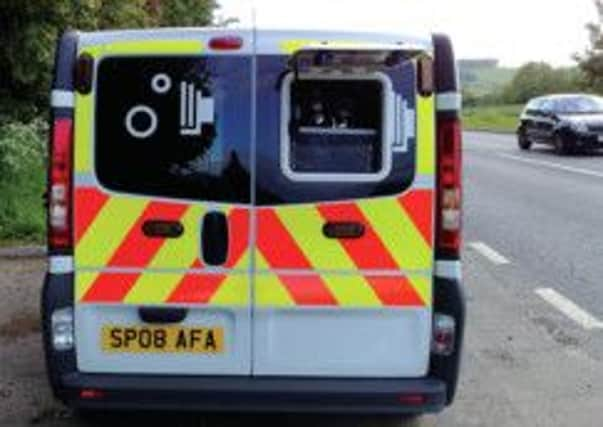Police claim speed cameras just a cash cow


Positioning the camera vans on a bridge above routes such as the M9, approaching Stirling, is more likely to raise money than save lives, they argue.
The Association of Scottish Police Superintendents (Asps) also said the force has diminishing influence in local camera partnerships, which are spread across the country and operated by councils and the police.
Advertisement
Hide AdAdvertisement
Hide AdBut when the eight forces merged into Police Scotland, which in turn created a national roads unit, the camera safety partnerships remained local, operating within the former police boundaries.
It is understood police chiefs have become so frustrated by the way the local bodies work that Chief Constable Sir Stephen House has even threatened to remove police logos and designs from the vehicles, to distance the force from the operation.
Politicians have also been critical of the location of mobile speed cameras, which they say should be situated closer to schools and accident black spots, but this is the first time police leaders have hit out at a partnership they signed up to.
Chief Superintendent David O’Connor, president of Asps, said the location of cameras on motorway bridges was like “shooting fish in a barrel” because of the number of vehicles driving under them at close to or over the limit.
“We need to make sure that the public perception of speed cameras is not that it is all about making money,” he said.
“Of course speeding on the motorway is dangerous, but these are not accident black spots. There must be more flexibility and maybe it’s time to review safety cameras and how they’re located across Scotland.”
He also wants speeding motorists to be offered safer driving courses as an alternative to fines and points on their licences.
“We need to look at how we improve driver behaviour,” O’Connor said. “Should the emphasis not be on education as well as enforcement?”
Advertisement
Hide AdAdvertisement
Hide AdSuperintendent Niven Rennie, of Asps, added: “We are a partner, but since the advent of Police Scotland more of a minor partner. Now it’s all one policing unit, people of lesser rank are going to the meetings and our influence is not as great as it once was.”
Police Scotland insisted there had been no change in the arrangements, but did reveal a review had been launched into where the cameras are located.
Although all revenue from safety cameras goes to HM Treasury, police say partnerships see high numbers of penalties as proof they are working well.
Asps is supported by politicians who also questioned the way in which cameras are used.
Alex Johnstone, Scottish Conservative transport spokesman, said: “If speed cameras were designed to save lives, we’d place them outside schools and in other built-up residential areas.
“Instead, they’re situated where these partnerships know they can get the most money from them. Our motorways and dual carriageways are actually the safest types of roads. That’s proof that cameras are not there to make roads safer, they exist to hit motorists in the pocket.”
Graeme Pearson MSP, Scottish Labour justice spokesman, added: “It would be regrettable and counter-productive for the choice of locating speed cameras to be driven by targets or revenue-raising.”
Camera Safety Partnership figures show 54,746 fines were issued in 2012-13, the second successive annual fall. It was not able to say how often cameras were placed at different locations around the country.
Advertisement
Hide AdAdvertisement
Hide AdTransport Scotland insisted cameras were placed at accident black spots.
A Transport Scotland spokesman said: “All fixed penalties paid by offenders are returned to HM Treasury and are not available to the Scottish Government, Transport Scotland or local safety camera partnerships.
“New fixed and mobile camera sites must meet criteria based on accidents, casualty histories and levels of speeding. Once a site is established, levels of enforcement and other operational decisions are made by the partnerships themselves.”
Superintendent Iain Murray, head of road policing at Police Scotland, said: “The deployment of speed cameras, the structure of the camera partnerships and their management has not changed since Police Scotland came into being in April 2013.”